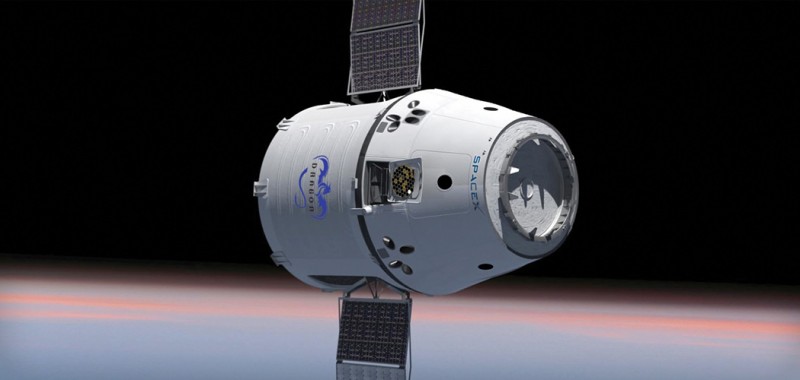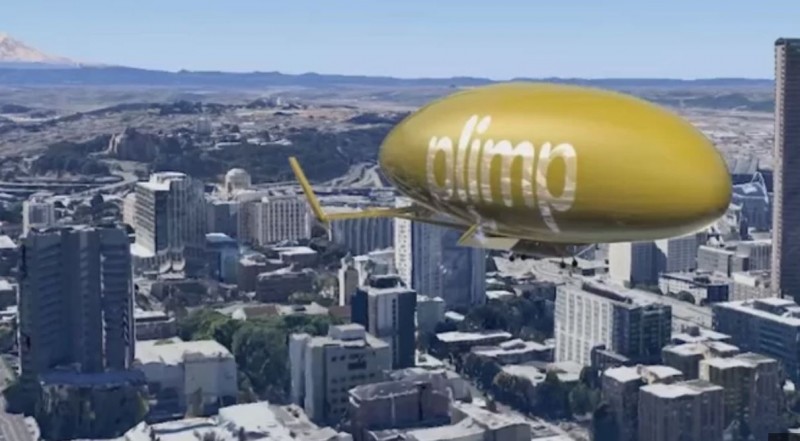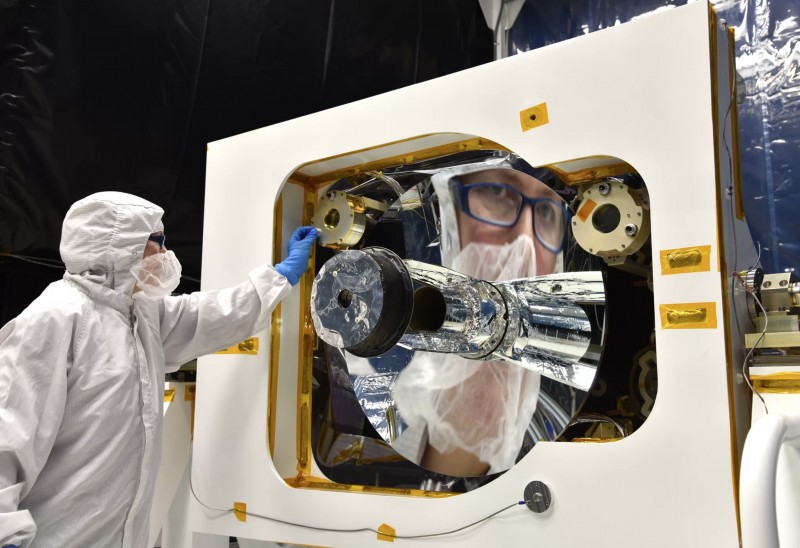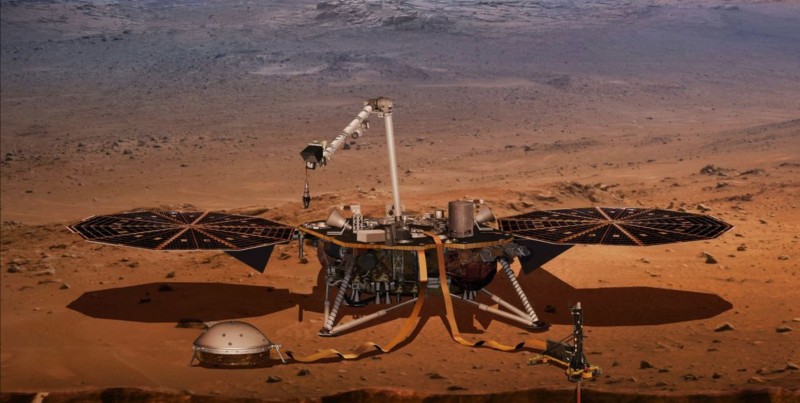News
SpaceX Dragon Delivers Cargo (and Christmas Treats) to Space Station
Saturday, December 8th 2018 11:12 PM
A SpaceX Dragon cargo ship made a special delivery at the International Space Station Saturday (Dec. 8) just in time for the holidays. And yes, Virginia, there are Christmas treats on board.
The robotic Dragon spacecraft arrived at the space station Saturday morning to deliver more than 5,600 pounds (2,540 kilograms) of fresh supplies for the six Expedition 57 astronauts on the orbiting lab. SpaceX launched the Dragon ship Wednesday (Dec. 5) from the Cape Canaveral Air Force Station in Florida on Wednesday (Dec. 5).
Station commander Alexander Gerst of the European Space Agency captured the Dragon capsule with a robotic arm at 7:21 a.m. EST (1221 GMT) as both spacecraft sailed 249 miles above the Pacific Ocean, just north of Papua New Guinea. Gerst and his crew are likely looking forward to the supplies packed aboard the spacecraft.
"On this resupply craft they also have some special things like candied yams, green bean casserole and even some Christmas cookies," NAS...
Read More
Read More
NASA's InSight Mars Lander 'Hears' Martian Wind, a Cosmic First
Saturday, December 8th 2018 12:00 AM
For the first time in history, we can hear the wind on Mars. Well, sort of.
NASA's InSight lander touched down on the Red Planet Nov. 26, and since its arrival, the robot has focused on acclimating to its new environment on Elysium Planitia. And now, the team behind the mission has turned the first bits of that data into an incredible new soundtrack, which you can hear in a new video, released today (Dec. 7).
"This is the first time on the surface of Mars that we've had instruments that can detect up to the frequency that humans can hear," Tom Pike, a scientist on the InSight project who focuses on the sensors, said during a news conference unveiling the recording. [NASA's InSight Mars Lander: Amazing Martian Photos!]
But while the instruments on InSight can capture data in human-friendly frequencies, higher-pitched sounds don't travel well on Mars. So, NASA also provided a version of the recording shifted up in pitch, which pulls some of the other...
Read More
Read More
NASA astronaut describes 'profound potential' of breakthrough space experiments
Friday, December 7th 2018 12:39 AM
As part of NASA's latest launch to the International Space Station on Dec. 5, the space agency sent up 5,600 pounds of research equipment, cargo and supplies atop a SpaceX Falcon 9 rocket. The cargo mission supports the ISS's crewmembers and dozens of experiments on the orbiting space lab.
Included in that payload is equipment for several science experiments and the potential to help with macular degeneration and research that may significantly improve wound healing – especially tissue regeneration.
"There are a lot of different, compelling reasons to leave Earth to conduct these experiments," Dr. Mike Roberts, Deputy Chief Scientist for the ISS National Lab, told Fox News in a recent interview. "We can use the ISS as a remote lab and utilize it as an engineering task platform to test new materials and test them in the harsh environment of space."
Former NASA astronaut Terry Virts, who logged 212 days in space and conducted three spacewalks totaling m...
Read More
Read More
Oumuamua Stays Quiet: Another SETI Search of Interstellar Visitor Comes Up Empty
Thursday, December 6th 2018 12:26 AM
If the first interstellar object ever detected in our solar system is actually an alien spacecraft, it's operating in stealth mode.
A search for radio signals coming from 'Oumuamua, the mysterious visitor from afar that zoomed through the inner solar system last fall, came up empty, a new study reports.
"We were looking for a signal that would prove that this object incorporates some technology — that it was of artificial origin," study lead author Gerry Harp, of the SETI (Search for Extraterrestrial Intelligence) Institute in Mountain View, California, said in a statement.
"We didn't find any such emissions, despite a quite sensitive search," Harp added. "While our observations don't conclusively rule out a non-natural origin for 'Oumuamua, they constitute important data in accessing its likely makeup."
Harp and his colleagues used the SETI Institute's Allen Telescope Array (ATA), a system of 42 radio dishes in Northern California, to listen for possible 'Oum...
Read More
Read More
While You Weren't Looking, Engineers Combined a Plane and a Blimp to Make a Plimp Airship
Wednesday, December 5th 2018 12:45 AM
What happens when you cross a blimp with a plane, and give it a few helicopter features? A lighter-than-air plimp-hybrid airship is born, according to a Seattle-based company looking for investors.
For $4 million plus overages (paid out over four years), investors can buy their own Model J — a 169-foot-long (51 meters) aircraft that can carry up to 10 people (eight passengers and two pilots), or about 2,000 lbs. (907 kilograms) through the air, thanks to its helium-filled blimp-like body, gas-electric hybrid engines and rotational wings with propellers.
But don't call it a plimp outright. That word is trademarked and meant to be used as an adjective, said James Egan, a Seattle-based attorney who is the CEO of Egan Airships, maker of the plimp-hybrid aircraft. [In Images: Vertical-Flight Military Planes Take Off]
The idea came to Egan in childhood, as he was playing with helium balloons and balsa-wood gliders. He noticed that these wooden gliders had a slower descent when he ti...
Read More
Read More
Lasers, Crystals and 36,000 Worms Will Ride a SpaceX Dragon to Space Station
Tuesday, December 4th 2018 12:02 AM
There will be 36,000 worms heading to space Dec. 4 — and, if all goes well, 2 million to 3 million will come back down.
SpaceX's Dragon spacecraft, riding on a Falcon 9 rocket, will carry more than 5,600 lbs. (2,500 kilograms) of tools, supplies and equipment to the space station crew, including more than 2,200 lbs. (1,000 kg) of science investigations. You can watch it live here on Space.com, courtesy of NASA TV.
The multitudes of worms in pouches — a millimeter-long variety called C. elegans — will aid scientists hoping to learn how to decrease the loss of muscle mass brought on by living in microgravity. Some will have changes made to the genes scientists think might impact muscle mass, and others will be exposed to drugs that can affect the molecular causes of muscle mass loss.
"What we're doing in this study is, for the first time … rather than just seeing them change, we're actually going to target them with interventions and see whether...
Read More
Read More
The Space Party Continues: NASA Probe Arrives at Asteroid Bennu Monday
Sunday, December 2nd 2018 12:31 AM
I hope you're not all partied out after the InSight lander's successful touchdown on Mars this week, because there's another big spaceflight event just around the corner.
NASA's OSIRIS-REx probe will officially arrive at the near-Earth asteroid Bennu at about 12 p.m. EST (1700 GMT) on Monday (Dec. 3), ending a 27-month deep-space chase. NASA will mark the occasion with a special webcast event from 11:45 a.m. to 12:15 p.m. EST (1645 to 1715 GMT), which you can watch live here at Space.com, courtesy of NASA TV.
The space agency will also air an "arrival preview program" at 11:15 a.m. EST (1615 GMT). You can catch that here at Space.com as well. [OSIRIS-REx: NASA's Asteroid Sample-Return Mission in Pictures]
The $800 million OSIRIS-REx mission launched on Sept. 8, 2016, embarking on a looping trek toward the 1,640-foot-wide (500 meters) Bennu. Upon arrival, the probe will take up a position about 12 miles (20 kilometers) from the space rock, NASA offic...
Read More
Read More
Why is NASA Looking for Marsquakes?
Wednesday, November 28th 2018 11:25 PM
Scientists are keeping their fingers crossed for numerous quakes — marsquakes, that is.
Nov. 26, NASA's newest Mars exploration mission, called the Interior Exploration using Seismic Investigations, Geodesy and Heat Transport (InSight) mission, is scheduled to touch down on the surface of the Red Planet. With a design inspired by the older Mars lander Phoenix, this next-generation machine will extend its robot arms and place a seismometer — a device that measures quakes — onto the surface of Mars. If all goes well, for two Earth years (one Mars year), it will listen for vibrations that happen beneath the surface of the planet, to answer some fundamental questions about how rocky planets, including our own, formed.
But what are marsquakes, and why are NASA scientists hunting for them?
Marsquakes, just like earthquakes, are vibrations that move through the ground. But the way these quakes form on the Red Planet may be fundamentally different from how...
Read More
Read More
What's Next for NASA's New Mars Lander?
Tuesday, November 27th 2018 10:43 PM
NASA's InSight lander has made it to Mars, but it'll be a while before the robot is ready to start its science work.
InSight arrived at its new home yesterday afternoon (Nov. 26), acing a touchdown on an equatorial plane called Elysium Planitia. The lander will begin probing the Red Planet's interior in unprecedented detail — a few months from now.
It'll take that long for InSight to deploy and calibrate its two main science instruments, a burrowing heat probe and a suite of super-sensitive seismometers. This gear must be placed on the Martian surface by the lander's robotic arm, and InSight team members want to make sure they get this crucial step — which no other Mars robot has ever done — exactly right. [NASA's InSight Mars Lander: Full Coverage]
So, the researchers will spend the next few weeks studying InSight's landing site carefully, deciding on the best deployment area. Then they'll practice deployment using a testbed lander h...
Read More
Read More
NASA InSight nails Mars landing after scary six minutes
Monday, November 26th 2018 10:34 PM
Robots are beginning to build up a substantial presence on Mars with the successful landing of NASA's InSight spacecraft on the Red Planet. The touchdown at 11:54 a.m. PT Monday followed a seven-month, 300 million-mile (485 million kilometer) journey from Southern California that started back in May.
InSight is the first robot to land on Mars since 2012, when the Curiosity rover took two worlds by storm on one day. But unlike its wheeled cousins, InSight will be sticking in one place. Rather than rolling around on the surface, it will drill below it to investigate what is going on inside our neighbor.
"It was intense," NASA administrator Jim Bridenstine said following the landing, which included a nerve-wracking six-minute descent through the Martian atmosphere during which a high-speed parachute deployment and landing went off perfectly.
Bridenstine was among those on hand at mission control at NASA's Jet Propulsion Laboratory in Pasadena, California. He passed...
Read More
Read More









